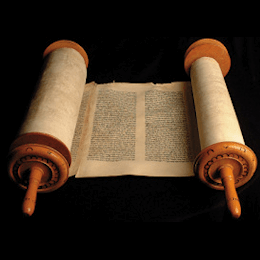Textus Receptus Bibles
Masoretic Text 1524
Old Testament
| 46:1 | כרע בל קרס נבו היו עצביהם לחיה ולבהמה נשׂאתיכם עמוסות משׂא לעיפה׃ |
| 46:2 | קרסו כרעו יחדו לא יכלו מלט משׂא ונפשׁם בשׁבי הלכה׃ |
| 46:3 | שׁמעו אלי בית יעקב וכל שׁארית בית ישׂראל העמסים מני בטן הנשׂאים מני רחם׃ |
| 46:4 | ועד זקנה אני הוא ועד שׂיבה אני אסבל אני עשׂיתי ואני אשׂא ואני אסבל ואמלט׃ |
| 46:5 | למי תדמיוני ותשׁוו ותמשׁלוני ונדמה׃ |
| 46:6 | הזלים זהב מכיס וכסף בקנה ישׁקלו ישׂכרו צורף ויעשׂהו אל יסגדו אף ישׁתחוו׃ |
| 46:7 | ישׂאהו על כתף יסבלהו ויניחהו תחתיו ויעמד ממקומו לא ימישׁ אף יצעק אליו ולא יענה מצרתו לא יושׁיענו׃ |
| 46:8 | זכרו זאת והתאשׁשׁו השׁיבו פושׁעים על לב׃ |
| 46:9 | זכרו ראשׁנות מעולם כי אנכי אל ואין עוד אלהים ואפס כמוני׃ |
| 46:10 | מגיד מראשׁית אחרית ומקדם אשׁר לא נעשׂו אמר עצתי תקום וכל חפצי אעשׂה׃ |
| 46:11 | קרא ממזרח עיט מארץ מרחק אישׁ עצתו אף דברתי אף אביאנה יצרתי אף אעשׂנה׃ |
| 46:12 | שׁמעו אלי אבירי לב הרחוקים מצדקה׃ |
| 46:13 | קרבתי צדקתי לא תרחק ותשׁועתי לא תאחר ונתתי בציון תשׁועה לישׂראל תפארתי׃ |

Masoretic Text 1524
The Hebrew text of the Old Testament is called the Masoretic Text because in its present form it is based upon the Masora—the Hebrew, textual tradition of the Jewish scholars known as the Masoretes (or Masorites). The Masoretes were rabbis who made it their special work to correct the faults that had crept into the text of the Old Testament during the Babylonian captivity, and to prevent, for the future, its being corrupted by any alteration. They first separated the apocryphal from the canonical books, and divided the latter into twenty-two books, being the number of letters in the Hebrew alphabet. Then they divided each book into sections and verses.
There is a great difference of opinion as to when the Masoretic Text was written, but it was probably accomplished in the 10th -11th century. Several editions existed, varying considerably, but the received and authoritative text is that of Jacob ben-chayim ibn Adonijah, who carefully sifted and arranged the previous works on the subject. It was published in 1524.